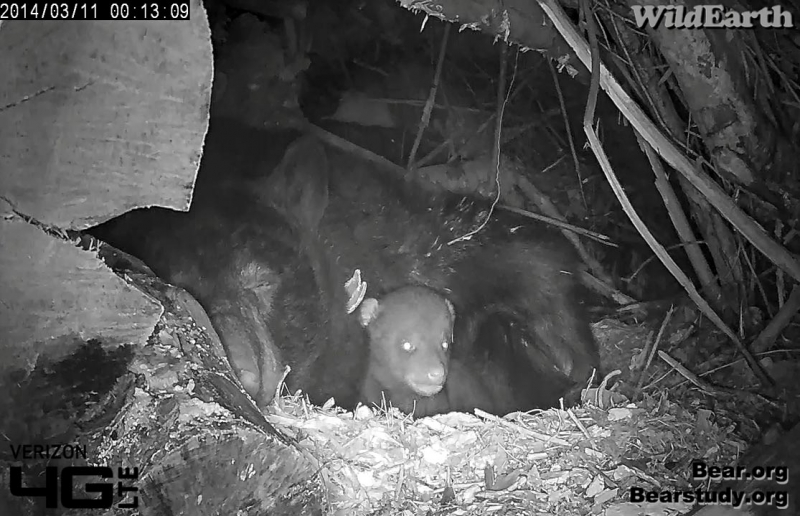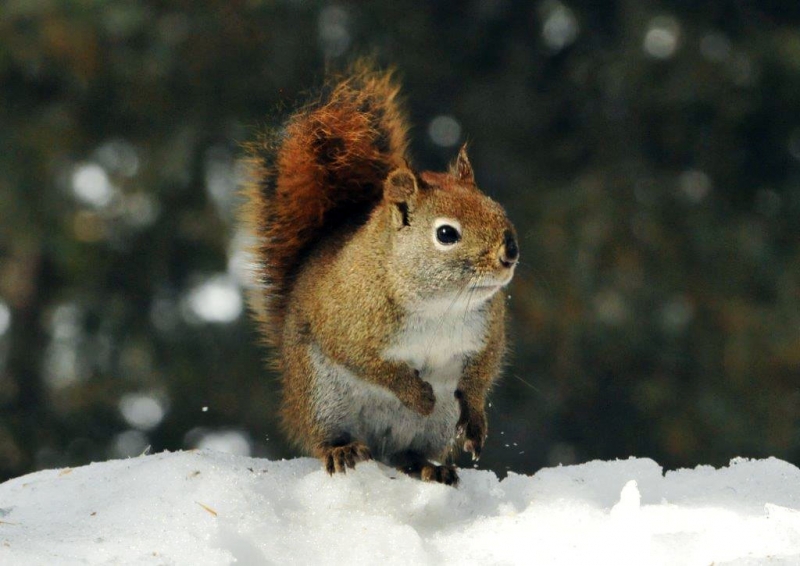Moving Forward – UPDATE March 11, 2014
 Honey steps over fenceWith the hearing over, we’re glad we could present our side and are optimistic about the outcome. While we wait for the judge’s decision, we’re focusing on this coming field season.
Honey steps over fenceWith the hearing over, we’re glad we could present our side and are optimistic about the outcome. While we wait for the judge’s decision, we’re focusing on this coming field season.
 Wide-eyed cubThe loss of 12-year-old June during last fall’s hunt removed the dominant female bear from a cluster of territories held by her and her descendants—daughters Lily (7), Jewel (5), and Aster (3), and granddaughter Faith (3). It had been our best opportunity to study mother/young territorial relations, and the new GPS technology was adding detail never before possible. June’s death ended that study.
Wide-eyed cubThe loss of 12-year-old June during last fall’s hunt removed the dominant female bear from a cluster of territories held by her and her descendants—daughters Lily (7), Jewel (5), and Aster (3), and granddaughter Faith (3). It had been our best opportunity to study mother/young territorial relations, and the new GPS technology was adding detail never before possible. June’s death ended that study.
But when one door closes, another opens. This year, our focus will be documenting how June’s descendants adjust their territories to fill June’s old territory—provided an unrelated female doesn’t move in and take it over.
 Snoozy cubsA goal of our studies in this area where bears are fed is to compare data from this study area with that from our nearby study area where feeding was minimal (Rogers 1987). We want to compare every aspect of bear life, including territory size, extra-territorial travels, social organization, diet, hibernation, age of first reproduction, litter size, survival, causes of death, and bear-human relations. We also want to compare bear complaints from this study area with bear complaints region-wide, statewide, and nationwide on a per-bear basis.
Snoozy cubsA goal of our studies in this area where bears are fed is to compare data from this study area with that from our nearby study area where feeding was minimal (Rogers 1987). We want to compare every aspect of bear life, including territory size, extra-territorial travels, social organization, diet, hibernation, age of first reproduction, litter size, survival, causes of death, and bear-human relations. We also want to compare bear complaints from this study area with bear complaints region-wide, statewide, and nationwide on a per-bear basis.
 Ely snowbanks - March 10, 2014The melting snow yesterday made us think of warmer weather ahead and the upcoming Black Bear Field Courses. Our old van parked next to the melting snowbanks in Ely still runs (218,000+ miles on it) and will continue creating memories of back-roads and cliff-like non-roads as we search for study bears during the courses.
Ely snowbanks - March 10, 2014The melting snow yesterday made us think of warmer weather ahead and the upcoming Black Bear Field Courses. Our old van parked next to the melting snowbanks in Ely still runs (218,000+ miles on it) and will continue creating memories of back-roads and cliff-like non-roads as we search for study bears during the courses.
 Red squirrelThe freeze that followed yesterday’s melt formed a crust strong enough to support red squirrels. For the first time this winter, we saw them chasing each other with wild abandon on top of the snow. In another month, most of the snow should be gone and bears will be emerging from their dens. At the Bear Center, Honey is already making forays through the deep snow.
Red squirrelThe freeze that followed yesterday’s melt formed a crust strong enough to support red squirrels. For the first time this winter, we saw them chasing each other with wild abandon on top of the snow. In another month, most of the snow should be gone and bears will be emerging from their dens. At the Bear Center, Honey is already making forays through the deep snow.
Thank you for all you do.
—Lynn Rogers and Sue Mansfield, Biologists, Wildlife Research Institute and North American Bear Center
All photos taken today unless otherwise noted.
